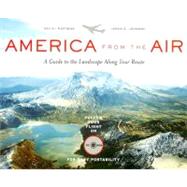
| Introduction | p. 1 |
| Paths Planes Fly | p. 1 |
| Why Planes Don't Fly Straight | p. 1 |
| Tips on Using this Guide | p. 2 |
| Flight Corridors | |
| New York-Las Vegas or Los Angeles | p. 4 |
| New York-Cleveland-Detroit-Chicago-Denver-Las Vegas or Los Angeles | p. 6 |
| New York-Philadelphia-Indianapolis-Kansas City-Phoenix-Las Vegas or Los Angeles | p. 68 |
| New York-Philadelphia-Washington, D.C.-Florida | p. 104 |
| Chicago-Atlanta-Florida | p. 136 |
| Boston-New York-Philadelphia-Washington, D.C.-Atlanta | p. 152 |
| Atlanta-Dallas-Phoenix-Los Angeles or San Diego | p. 166 |
| San Francisco-Los Angeles | p. 194 |
| Chicago-San Francisco | p. 208 |
| New York-Washington, D.C.-Dallas | p. 230 |
| Seattle-Portland-San Francisco or Los Angeles | p. 244 |
| New York, Chicago, or Minneapolis-Seattle | p. 272 |
| Florida-Texas | p. 294 |
| Boston-Chicago | p. 310 |
| Anchorage-Seattle | p. 318 |
| Background | |
| Clouds and Winds | p. 331 |
| Light | p. 335 |
| Landforms | p. 336 |
| Plate Tectonics | p. 341 |
| Index of Flights | p. 343 |
| List of Articles | p. 361 |
| Bibliography | p. 366 |
| Illustration Credits | p. 370 |
| Index | p. 371 |
| Table of Contents provided by Ingram. All Rights Reserved. |
The New copy of this book will include any supplemental materials advertised. Please check the title of the book to determine if it should include any access cards, study guides, lab manuals, CDs, etc.
The Used, Rental and eBook copies of this book are not guaranteed to include any supplemental materials. Typically, only the book itself is included. This is true even if the title states it includes any access cards, study guides, lab manuals, CDs, etc.